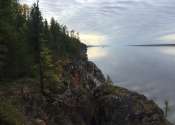The geography of Antarctica's underside
Planetary scientists would be thrilled if they could peel the Earth like an orange and look at what lies beneath the thin crust. We live on the planet's cold surface, but the Earth is a solid body and the surface is continually ...









